How Corner Food Stores Are Transforming Access to Fresh Produce in Urban Areas
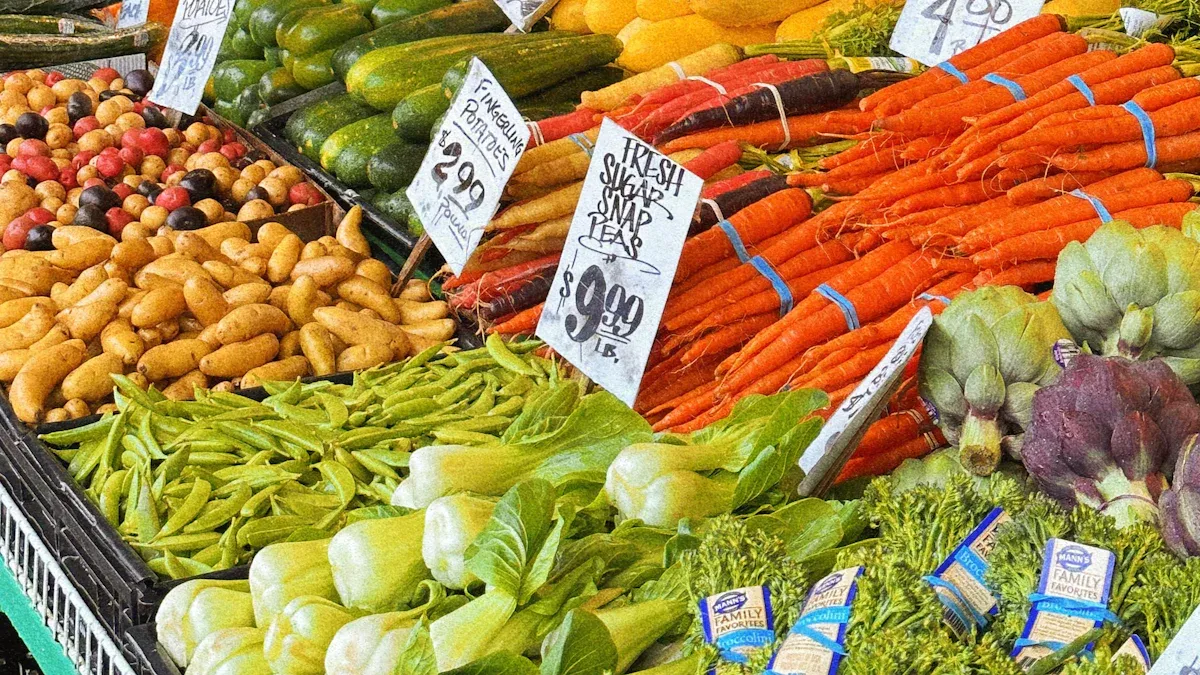
You might notice that Corner Food Stores are popping up on busy city streets, making it easier for you to grab groceries close to home. These small shops often sit where big supermarkets do not, especially in neighborhoods called food deserts. Even though most people can walk to these stores, fresh fruits and veggies are hard to find.
Store owners sometimes struggle to connect with healthy food suppliers, especially if language or culture gets in the way. This means you might see more chips and soda than apples or carrots. Still, with new ideas and strong community support, these shops can help your neighborhood eat better and feel healthier.
Key Takeaways
Corner food stores bring fresh fruits and vegetables closer to people in neighborhoods where big supermarkets are rare.
Stores improve access by adding fresh produce displays, using clear signs, and offering discounts to encourage healthy choices.
Programs like SNAP and WIC help make fresh produce affordable and increase sales at these stores.
Partnerships with local urban farms provide fresh, local produce and create more options for shoppers.
Support from city policies and community programs helps stores keep fresh produce available and affordable for everyone.
Expanding Produce Variety
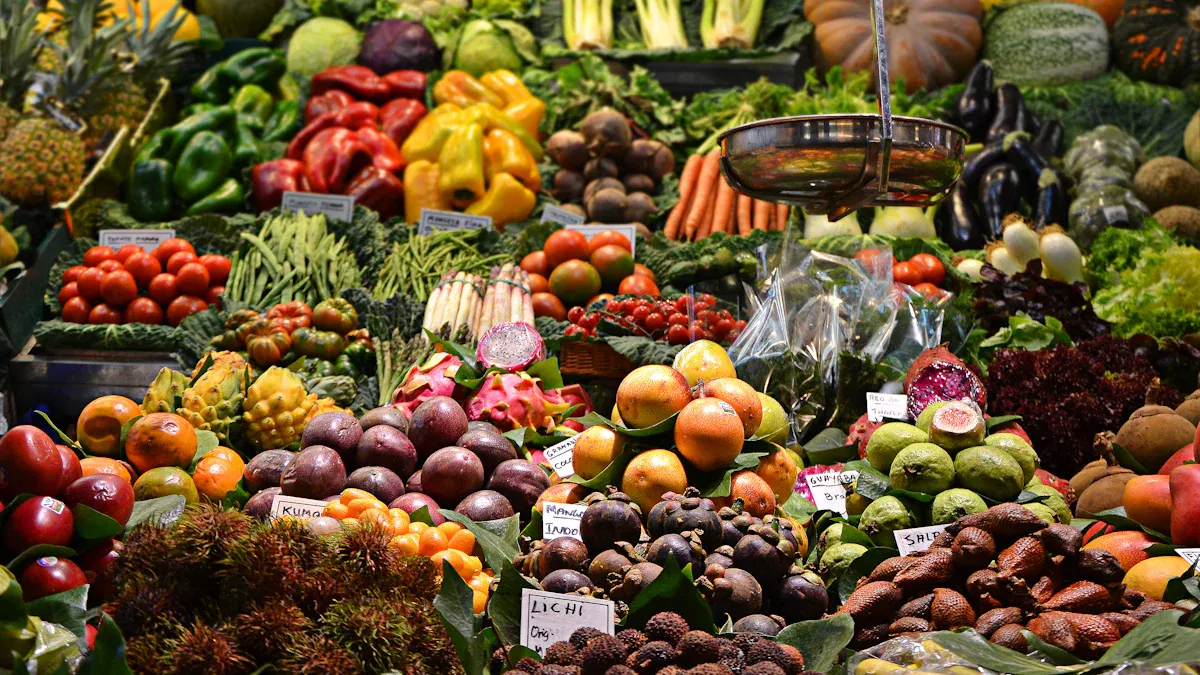
Store Makeovers
When you walk into a store and see bright, fresh fruits and veggies right at the front, you feel more excited to buy them. Many corner food stores now add new refrigerators and change their layouts to make healthy foods easy to spot. Store owners often get help from community groups or city programs to pay for these upgrades. Sometimes, they even get training on how to keep produce fresh and tasty.
Did you know? Adding just one more type of fruit or veggie can make you 12-15% more likely to buy it!
Here’s a quick look at how these changes help:
What Changed | What Happened Next? |
|---|---|
Sales jumped from $50/week to $500/week in just one month | |
Bought new refrigerated produce displays | Kept produce fresh and boosted sales |
Changed store layout to highlight healthy food | Made it easier for you to find and choose fresh produce |
Staff learned about buying and selling produce | Stores managed their produce better and wasted less |
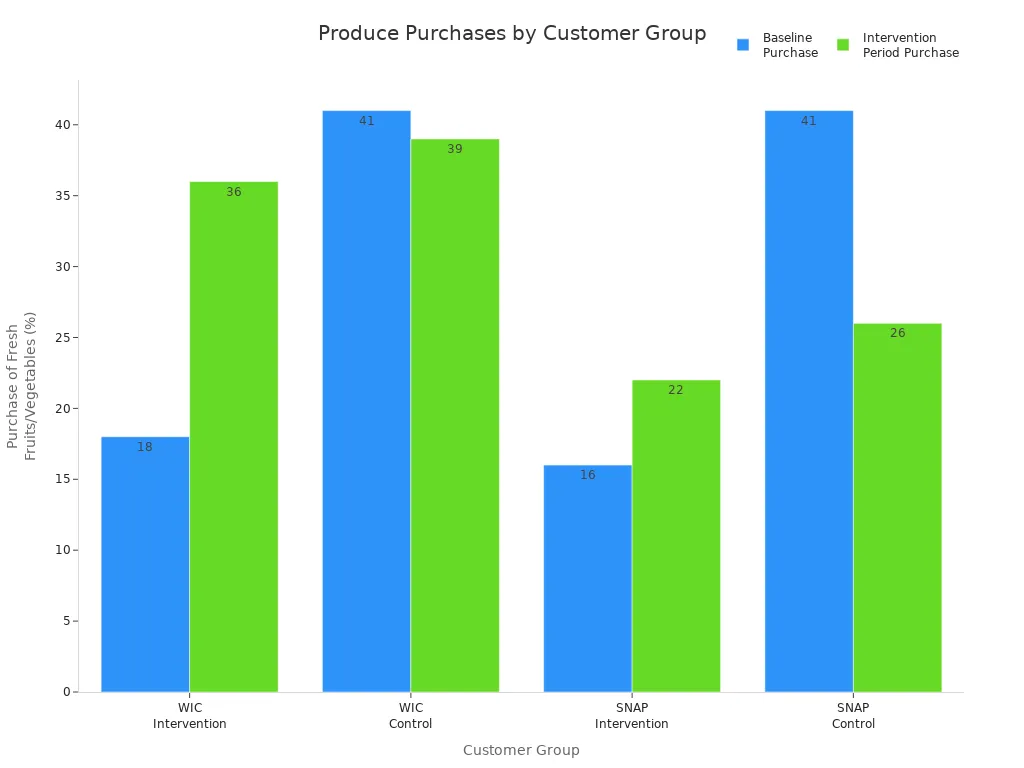
You can see from the chart that families using WIC and SNAP bought more fruits and veggies after these changes. This is especially true in neighborhoods where people rely on corner food stores for their groceries.
Point-of-Purchase Promotions
You might notice colorful signs, shelf labels, or even coupons near the fruits and veggies. These are called point-of-purchase promotions. They help you spot healthy choices fast. Some stores use traffic light labels—green for healthy, yellow for okay, and red for less healthy. Others give discounts or coupons right at checkout.
Signs and labels make it easier for you to pick healthy foods.
Coupons and discounts can save you money and encourage you to try new produce.
When stores use these tricks along with better displays and more variety, you are much more likely to buy fruits and veggies.
Tip: Look for special deals or signs next time you visit your local corner food store. You might find a new favorite snack!
Affordable Access
Pricing Strategies
You might wonder how stores make fresh produce more affordable for you. Many use creative pricing strategies that help you save money and eat healthier. Take a look at some of the most effective ways stores lower costs for fruits and veggies:
Pricing Strategy Type | Description | How It Helps You |
|---|---|---|
Monetary Matched Incentives | The store matches what you spend on produce, doubling your buying power. | You get more fruits and veggies for the same price. |
Targeted Subsidies | Stores give discounts to people who need it most. | If you qualify, you pay less for healthy food. |
Financial Supplements | Extra money just for buying produce. | You can buy more fresh items without spending extra. |
Fruit and Vegetable Vouchers | Special coupons you use only for fruits and veggies. | You try new produce without worrying about the cost. |
Rewards-Based Incentive Programs | Earn rewards when you buy fresh produce. | You get perks or discounts for making healthy choices. |
💡 When stores combine these pricing tricks with better displays and clear labels, you are even more likely to pick up fresh produce. These strategies work best when stores can keep their shelves stocked and the produce stays fresh.
Food Assistance Programs
Food assistance programs like SNAP and WIC make a big difference in your neighborhood. They help you buy more fruits and vegetables, even if you have a tight budget. Here’s how these programs boost access and sales:
The '5-for-5' SNAP incentive gives you a $5 coupon for produce when you spend $5 or more. This led to almost three times more fruits and veggies sold in some stores.
Most store owners say selling produce is good for business. Almost all believe you want more fresh options.
Surveys show 77% of SNAP shoppers eat more produce because of these programs. Many use the incentives again and again.
Stores often add new signs, host cooking demos, or hold health fairs to get you excited about healthy eating.
Many shoppers visit their local store almost every day. Most say having fresh produce available is very important.
Next time you shop, check if your store offers these programs. You might find new ways to save and eat better!
Corner Food Stores as Community Hubs
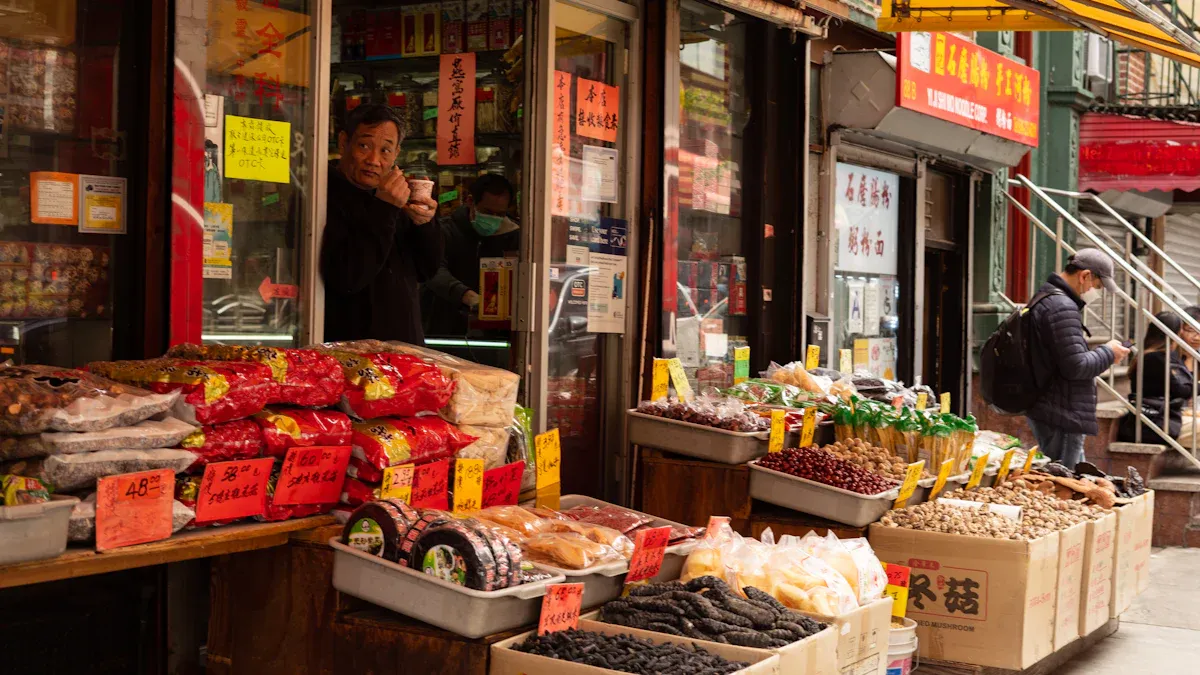
Urban Farm Partnerships
You might not realize it, but many corner food stores now work closely with urban farms and community gardens. These partnerships bring fresh, locally grown produce right into your neighborhood. Here’s how these connections make a difference:
Urban farms and gardens team up with local groups to deliver fruits and veggies to people who need them most.
Programs like GrowNYC’s Fresh Food Box let you pick up affordable produce boxes at community gardens or even at your local corner store.
You can use EBT or SNAP benefits to buy these boxes, which makes healthy food more affordable for everyone.
There’s no need to sign up for a long-term plan. You can buy a produce box whenever you want, so it fits your schedule and budget.
Nonprofits such as RISE and the Black Feminist Project offer free or low-cost produce boxes, making it even easier for families to get fresh food.
Sometimes, corner food stores and food pantries work together with urban farms to reach more people in the community.
These partnerships help fill the gap in areas where big supermarkets are missing. You get more choices, better prices, and food that’s grown close to home. When you see fresh tomatoes or greens at your corner store, there’s a good chance they came from a local farm just a few miles away.
Tip: Ask your local store if they partner with any urban farms. You might discover new produce you’ve never tried before!
Community Engagement
Corner food stores do more than just sell groceries. They often act as gathering spots and play a big role in shaping your neighborhood’s health. Store owners see themselves as leaders who can help you and your family make better food choices. Here’s what you might notice:
Many owners encourage kids to eat more fruit and talk with local schools about healthy snacks.
Some stores stop selling cigarettes and focus on promoting fresh produce instead.
Owners know that health problems like diabetes and obesity are common in the community. They want to help by offering better food options.
Stores rely on programs like SNAP and WIC. These programs help keep produce affordable and support the store’s business.
Owners believe their actions—like putting fruit near the checkout or talking about healthy eating—can change what you buy.
Even though it’s not always easy to find cheap, fresh produce in small amounts, many owners stay committed to helping their neighbors eat well.
You might see your local store hosting a cooking demo, putting up posters about healthy eating, or working with a nearby school. These efforts help everyone learn more about good food and make healthier choices. When you shop at these stores, you support a business that cares about your community.
Note: Store owners say they would love more training and support to become even better health promoters. If you have ideas or want to help, talk to your local store!
Corner food stores often stand alone in food deserts, where they are the only place to buy groceries. By accepting EBT and SNAP, these stores can offer more than just snacks—they bring in fresh produce, lean meats, and whole grains. This helps you stretch your food budget and eat better. When you shop at these stores, you help build a stronger, healthier neighborhood.
Overcoming Challenges
Supply Chain Solutions
You might wonder why some stores still struggle to keep their shelves full of fresh fruits and veggies. Many small shops face big hurdles when it comes to getting produce. Here are some of the main challenges:
Not enough space for refrigeration or storage.
Hard to find high-quality produce at good prices in small amounts.
Most stores buy produce using cash-and-carry, which limits variety.
Owners often lack experience with produce distribution and inventory.
Fresh produce can spoil quickly, leading to waste and lost money.
Small stores do not have the buying power of big supermarkets.
Language barriers and limited staff make things even harder.
Many customers still choose chips or soda over apples or carrots.
But you can see some stores finding smart ways to solve these problems. For example, Corner Market in Mississippi works with local farmers and vendors. They get deliveries almost every day, so the produce stays fresh and there is always something new to try. In Baltimore, a mobile app called BUD helps connect local farmers, food distributors, and corner stores. This app makes it easier for stores to order together and save on delivery costs. When stores and farmers work as a team, everyone wins.
Policy and Support
You might not realize how much local policies and support programs matter for your neighborhood store. Some cities, like Washington, DC, have laws and grants that help stores buy produce at wholesale prices and in smaller amounts. Programs like Healthy Corners give stores regular deliveries, a small stipend, and even help with equipment. This makes it easier for you to find affordable fruits and veggies close to home.
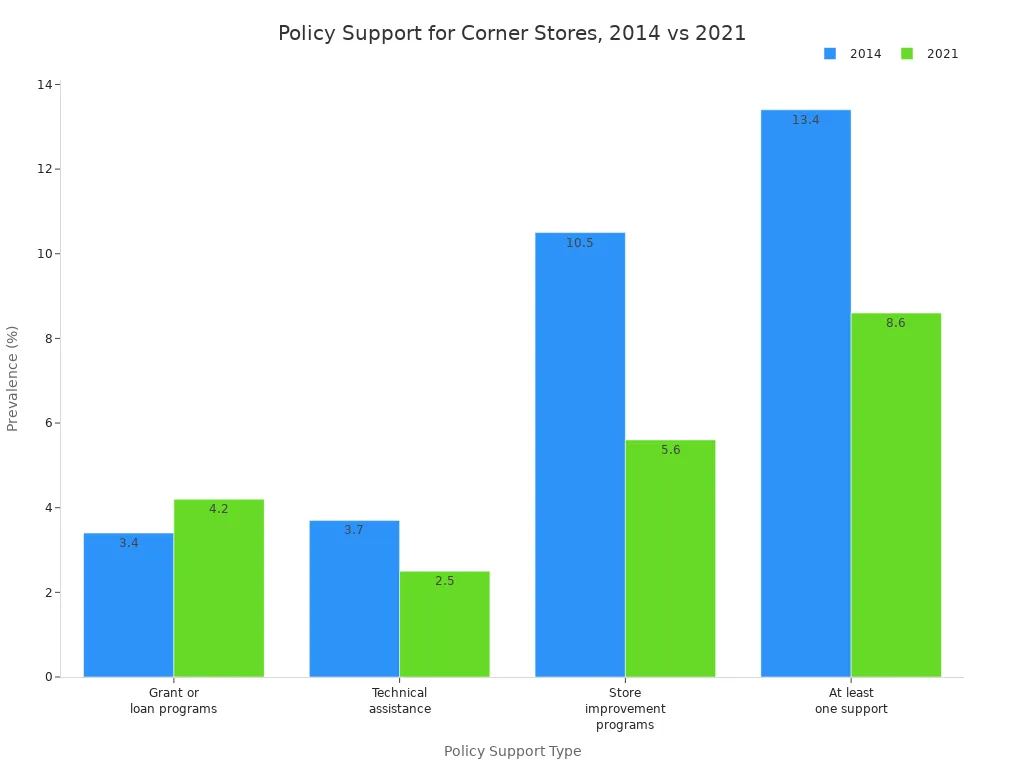
Still, support for these stores has dropped in recent years. Fewer stores now get grants, training, or help with store improvements. Nonprofits like The Food Trust step in to fill the gap. They offer training, incentives, and equipment to help store owners stock more produce. Programs like SNAP and WIC also play a huge role. When you use these benefits, you help keep fresh produce on the shelves and support your local store.
Tip: If you want to see more fresh food in your area, ask your store owner about local programs or ways you can help. Your voice matters!
You can see how Corner Food Stores help your neighborhood eat better by bringing in more fresh produce, working with local farms, and using smart pricing. Community-driven programs and new tech like delivery apps make healthy food easier to find.
When you support these stores, you help build a fairer food system. Watch for new trends—like local food and better store policies—that will keep making your city healthier.
FAQ
How can you tell if your corner store sells fresh produce?
Look for signs, baskets of fruits, or a fridge with veggies near the front. Some stores use bright labels or posters. If you do not see any, ask the owner. They might start stocking more if you show interest.
Can you use SNAP or WIC at most corner food stores?
Yes, many corner stores accept SNAP and WIC. You can use your benefits to buy fruits and vegetables. If you are not sure, check for a sign on the door or ask the cashier.
What should you do if your local store does not offer fresh produce?
Talk to the store owner. Let them know you want more fruits and veggies. You can also ask about local programs or suggest they partner with urban farms. Your feedback matters and can help bring change.
Are produce boxes from urban farms affordable?
Yes! Many programs offer produce boxes at low prices. You can often use SNAP or EBT to pay. These boxes give you a mix of fresh, local fruits and veggies. Some groups even offer discounts or free boxes for families in need.
See Also
How Time Out Corner Shops Are Changing Urban Convenience
Discovering Top Corner Stores Easily Accessible On Foot
Uncovering Dallas Corner Stores Combining Groceries And Local Taste
Experiencing The Elegant Appeal Of Upscale Corner Stores
Understanding The Growth Of AI-Driven Corner Stores For Retailers
